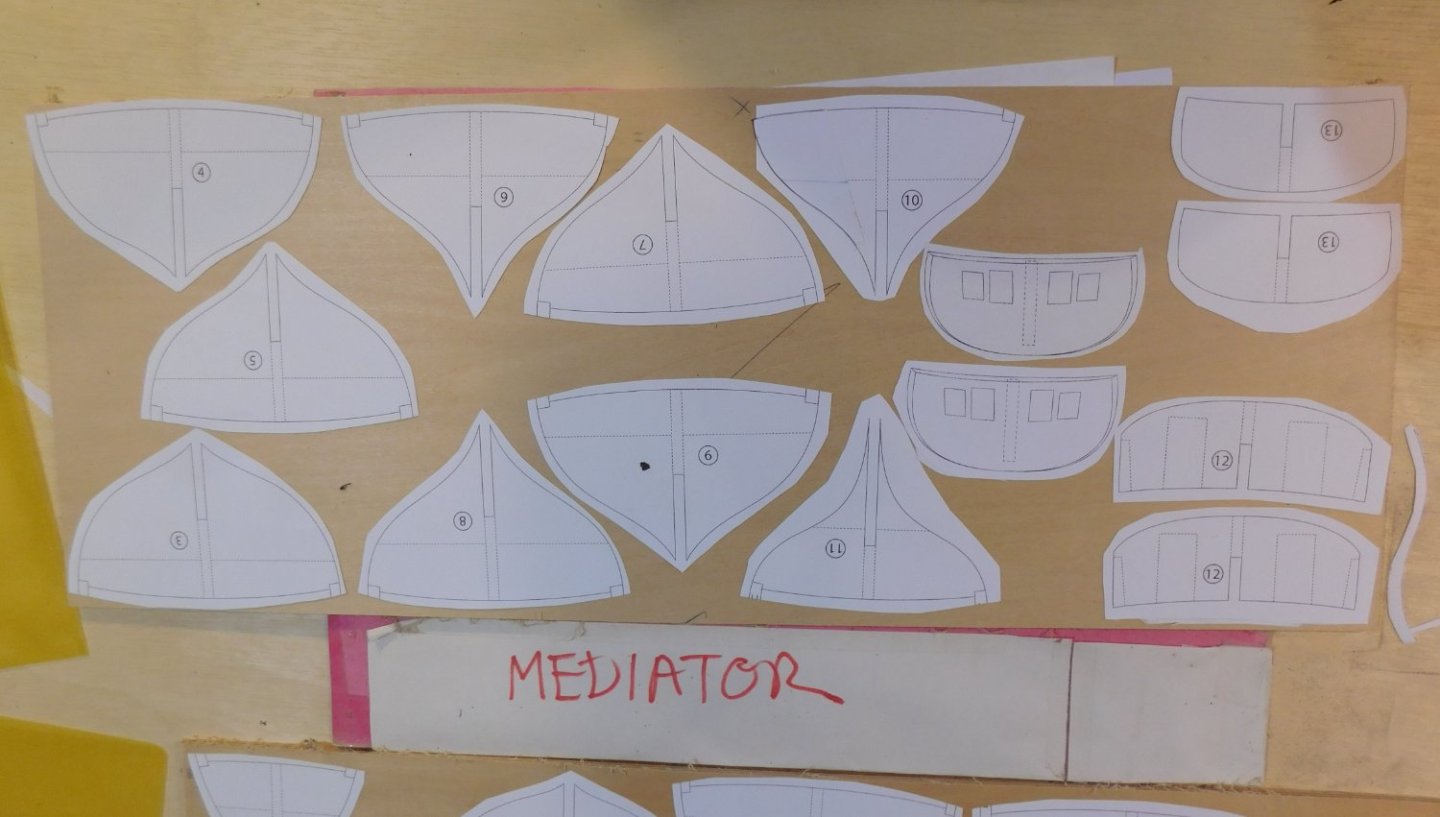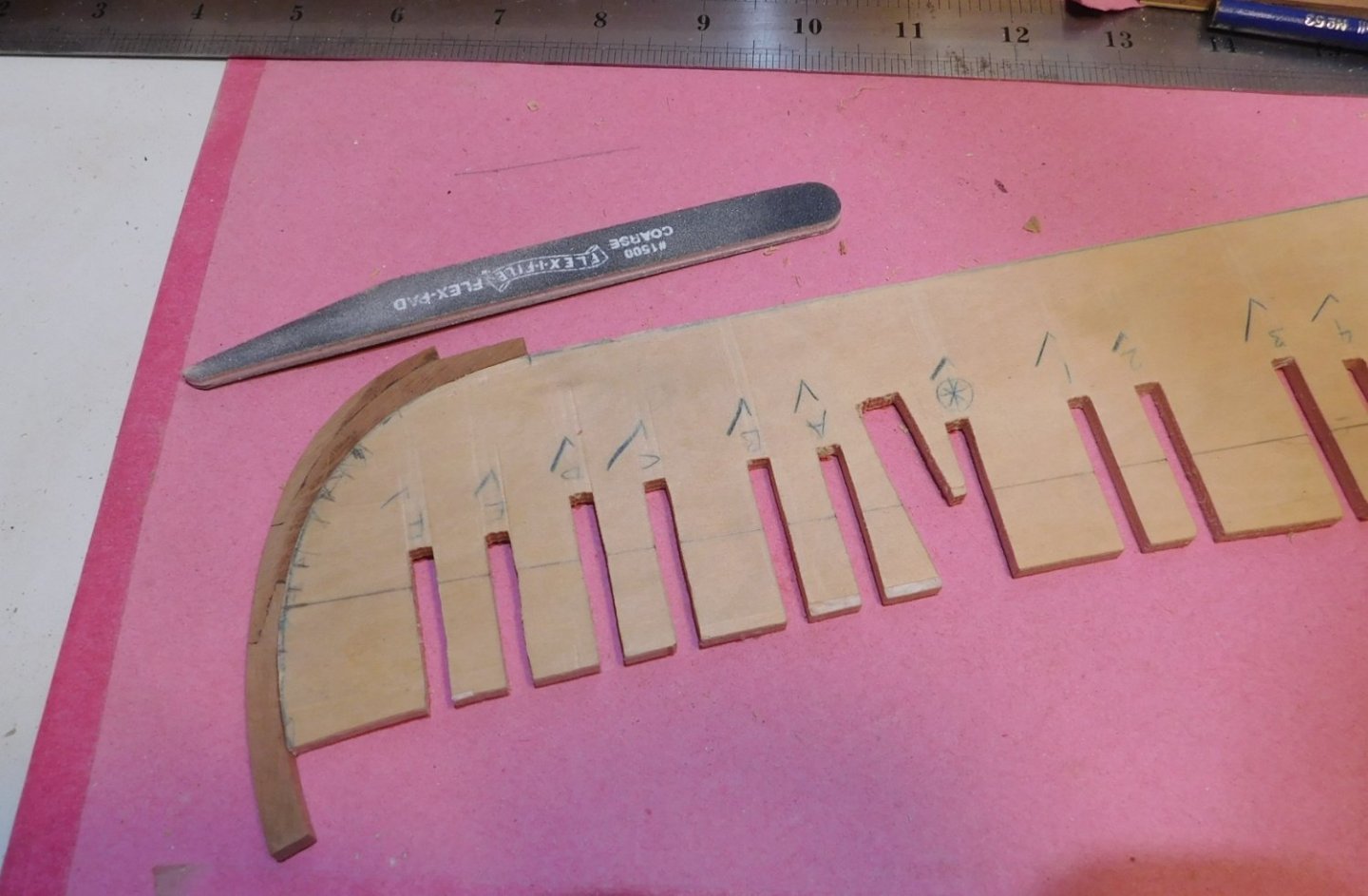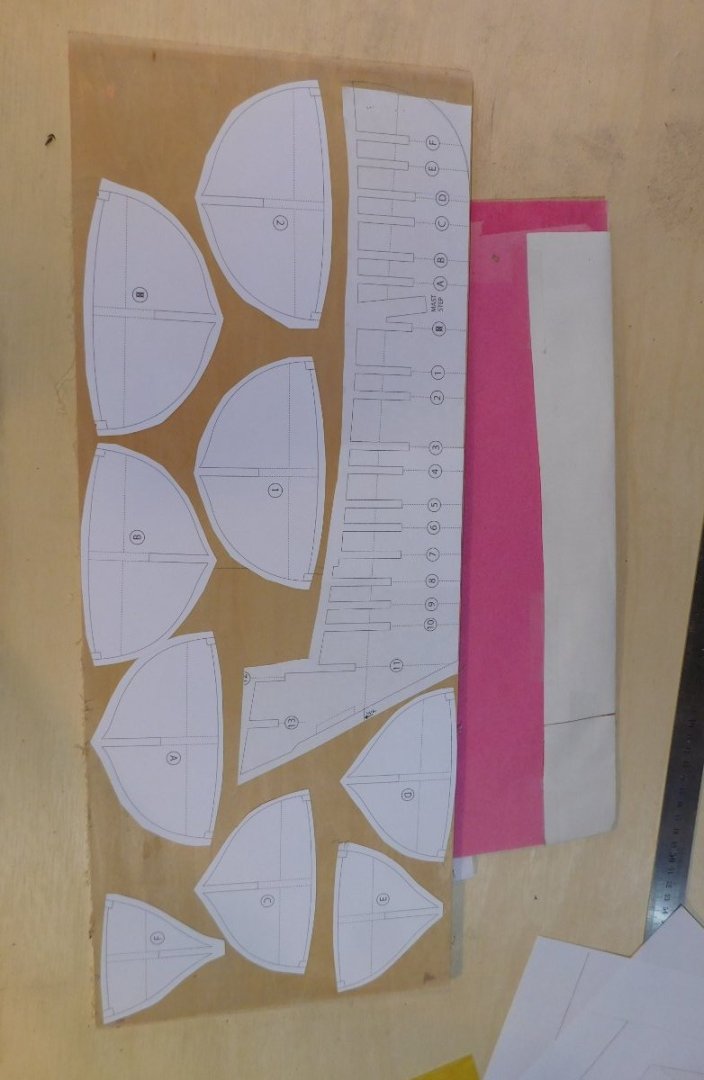-
Posts
3,020 -
Joined
-
Last visited
Content Type
Profiles
Forums
Gallery
Events
Everything posted by bruce d
-
Hello Nils, it is looking good. Glad to hear you are recovering. Bruce
- 180 replies
-
- pilot boat
- Elbe 5
-
(and 3 more)
Tagged with:
-

Looking for pre-made sails for Mamoli Britannia
bruce d replied to Bob Lowther's topic in Wood ship model kits
Hello Costas, Welcome aboard! Britannia is a popular subject and I am sure you will find someone here has useful advice. Can I suggest you post a bit about yourself in the New Members Introduction thread? Link : New member Introductions - Model Ship World™ A build log will also get attention on your project, that is a great way to chat to other people who can see your progress. Regards, Bruce -
I believe this would be classified under 'non-habit forming activity'.
-
Thanks, I have not used either so must ask: are they the same basic material? It is useful to know that you have used the ModelSpan but the processes described are used on Silkspan, I am wondering if the ModelSpan material would perform in the same way with the same results when the same processes are used. I like the results and would like to replicate them. 👍to Ron.
- 542 replies
-
- Sphinx
- Vanguard Models
-
(and 3 more)
Tagged with:
-
Is there a Silkspan equivalent product available in the UK (or a friendly EU source)?
- 542 replies
-
- Sphinx
- Vanguard Models
-
(and 3 more)
Tagged with:
-

Mariner's Astrolabe, full scale, AON
bruce d replied to AON's topic in CAD and 3D Modelling/Drafting Plans with Software
Alan, you have made something very nice, well done. Also, you may have started something. Here is an astrolabe that was illustrated and described in the Nautical Research Journal vol 2, issue 1 (1950): An astrolabe is not on my to-do list (well, ok, you got me thinking about it), but there is an equinoctial sundial creeping up the queue. Bruce- 36 replies
-
- Navigation
- Instrument
-
(and 1 more)
Tagged with:
-
I originally had a set made at a local print shop which I cut up and scanned on my home setup. After some jiggery with the resultant scale issues, I printed off whatever was appropriate for the bits I was working on: card, paper, mirror image etc. Before I pulled the trigger on the re-start I had a new set printed full size. So far, I haven't needed them but we shall see ... Bruce
- 43 replies
-
- mediator
- first build
-
(and 1 more)
Tagged with:
-
Next, a dry-fit and final fettle of the frames. Passed the test, time to get the glue out. Frames were marked with WL and checked. Fitting the frames dead square Spacers were cut dead square from some stable stock to fit snugly between the frames. The method used was to cut a piece that was a snug fit where the frame meets the hull former and then cut it in two, one piece for each side (good old Byrnes saw). All frames for the main body of the hull in place, square and rigid. The stern-most frames which form the shape of the cabin were worked to shape and tested but set aside until later. Second deviation: The plans call for part #14 to be made as two identical but mirrored pieces to be mounted (how is not explained) at the stern. Thinking about the fairing and planking ahead this seemed fragile so … I made this as one piece and cut a slot for it in the stern. I thought about doing this on the bandsaw at the same time as the rest of the slots for the frames but decided to do it after all the frames were glued up so I could study the lines and shape more closely and do some of the fairing of this ‘new’ piece #14 off the model. The part #14 as drawn: My single piece version: I put paper templates on both sides of #14 and marked what needed to come off top, bottom and sides. Copied the angle of #14 relative to the WL and set the disc sander accordingly. Steady hand and baby-steps, looks like it worked well. Glued and screwed the now beveled #14 in place against wood fillers, should be strong enough to survive my attempts at fairing. Fairing is coming soon, first I have to dry fit the cabin frames to the top-side to get the stern-shape straight in my head.
- 43 replies
-
- mediator
- first build
-
(and 1 more)
Tagged with:
-
It is time to start again. I looked closely and dispassionately at the hull assembly of Mediator and the quality and accuracy I wanted just weren’t present. The bulk of the problems are down to my choices of materials, such as old cheap ply frames crumbling when fairing was attempted. So, it was time to start over. Let’s call it Mediator 2.0. Using good quality 5mm birch ply I made all new frame sections and formers. The process was basically identical to the first attempt so I will skim through the bulk of the steps and highlight the few differences. The main hull former was, as before, made on the bandsaw by using an A4 plan stuck to the plywood with good quality spray temporary adhesive. I did the aft section first and due to the limited throat size of my bandsaw, then flipped it over and used a reversed copy for the fore-part of the former. A light shining through the already cut-out section made alignment easy. The former with all slots cut (except for piece #14, see later) and waterline marked. First difference: I added a rabbet to the main hull former. This is not indicated on the plans (there are no instructions as such) and the small difference in width between the former material and the keel-pieces did give a lip that may have been adequate for much of the planking, but I feel the addition of a ‘proper’ rabbet can only help. The rabbet lines up with the bottom of the dry-fitted frame. This was the first time I had used the Stanley swiveling vice properly and it was very useful, glad I got it (thanks to another user on MSW). The scraping tool is an Artisania Latina scraper, did a first rate job. First passes were with the 3.5mm x 5mm profile then I carried on with the 5.5 x 5mm profile for another mm or so. The previously made stempiece and forward area of the keel piece were fettled before the frames/bulkheads go in place.
- 43 replies
-
- mediator
- first build
-
(and 1 more)
Tagged with:
-
Guy, glad to hear of the progress and glad to have you back aboard. The plans are pretty good, but I have a suggestion or two which will be in upcoming posts. Nothing big or sinister, just a couple of things that may be worth considering. Hello Pat, thanks for the encouragement. Re-reading my earlier posts, I did moan a lot, forgot to say I was enjoying it. Lessons have been learned, it's time for an update ... watch this spot!
- 43 replies
-
- mediator
- first build
-
(and 1 more)
Tagged with:
-
Hello Jason and welcome to MSW from the UK. Bruce
-

New workshop in the garage.
bruce d replied to John Murray's topic in Modeling tools and Workshop Equipment
Can't help with with the hades-like top temperature but a cheapish fix for the lower end is to use electric underfloor heating. It doesn't have to be permanently installed, it can be laid on insulation and covered with cheap engineered flooring. Set it to kick in at 7 or 8 degrees (or whatever) and if the rest of the shed is insulated you can avoid the worst of the problems arising from freezing glues etc. as well as keeping the workshop usable. If you don't aim to keep the place toasty warm, just usable, it works. -
Hello John and a warm welcome to MSW from Sussex. As you have already seen, people are willing to help so ... my advice .. get started and ask questions! Looking forward to seeing your log of a true working boat. Regards, Bruce
-
Welcome Frank. Follow the steps and you will get through this. 😉 Many people here followed a similar path to the hobby and there are no rules saying that you can't have other interests as well (check out the 'shore leave' subforum) so pull up a chair and start your journey. Your point about 'the journey' strikes a chord with me, perhaps others as well, since despite my expectations I have focused on research since retirement instead of actual model making. See where it goes, the idea is to enjoy it. Regards, Bruce
-
Hello Kurt, The Bohler saw, also sold under the Minitool and Kaleas names, has 6mm slots. Bruce
About us
Modelshipworld - Advancing Ship Modeling through Research
SSL Secured
Your security is important for us so this Website is SSL-Secured
NRG Mailing Address
Nautical Research Guild
237 South Lincoln Street
Westmont IL, 60559-1917
Model Ship World ® and the MSW logo are Registered Trademarks, and belong to the Nautical Research Guild (United States Patent and Trademark Office: No. 6,929,264 & No. 6,929,274, registered Dec. 20, 2022)
Helpful Links
About the NRG
If you enjoy building ship models that are historically accurate as well as beautiful, then The Nautical Research Guild (NRG) is just right for you.
The Guild is a non-profit educational organization whose mission is to “Advance Ship Modeling Through Research”. We provide support to our members in their efforts to raise the quality of their model ships.
The Nautical Research Guild has published our world-renowned quarterly magazine, The Nautical Research Journal, since 1955. The pages of the Journal are full of articles by accomplished ship modelers who show you how they create those exquisite details on their models, and by maritime historians who show you the correct details to build. The Journal is available in both print and digital editions. Go to the NRG web site (www.thenrg.org) to download a complimentary digital copy of the Journal. The NRG also publishes plan sets, books and compilations of back issues of the Journal and the former Ships in Scale and Model Ship Builder magazines.






